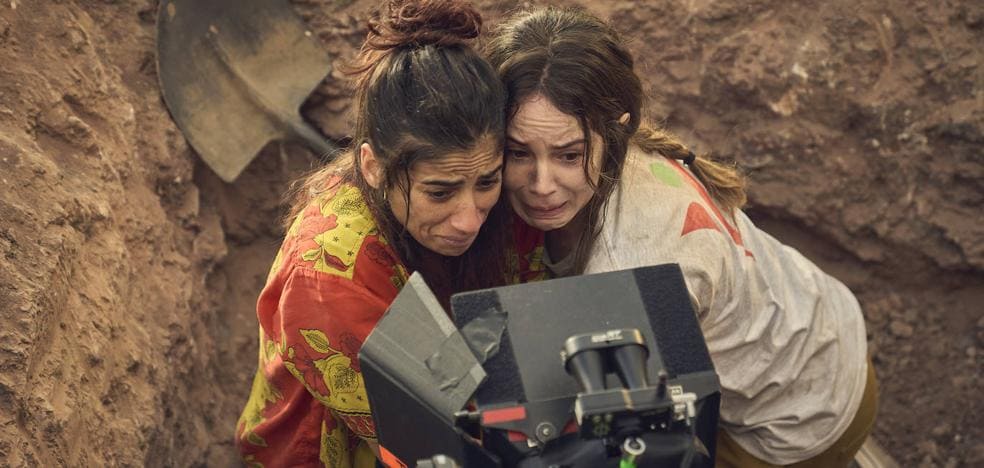The average cost of female-directed films is half that of male-directed films
Only 32% of positions in the Spanish film industry are occupied by women, compared to 68% of men, while female directors, screenwriters and producers work on half the budget for their projects than men. The data was revealed this morning during the presentation of the report ‘Women in the Spanish Feature Film Audiovisual Sector’, presented each year by the Association of Women Filmmakers and Audiovisual Media (Cima). The launch of the study, now in its seventh edition, took place at the Filmoteca de Cantabria, as part of the meeting ‘Battling the Obvious: Without Equality, There Is No Democracy’, which will be held in Santander from 23 to 25 June with the aim of making female film and television makers in Spain visible. It is, as sociologist Sara Cuenca, who was responsible for the preparation, noted, “a good foundation and a good workhorse to make the necessary adjustments” to build a fair labor market.
There is no doubt that the sector is masculinized, and even more so if one takes into account the percentage intervals established by the Equality Law, which speak of a distance between 40% and 60% between both sexes to interpret that a position is equitable . However, the problem is greater when the occupations of men and women in production are broken down by gender. The study identifies another concept that is widely masculinized for performance below 20%. We find in that section the sound, in which only 17% of the women have been, the direction of photography (16%) and musical composition (12%).
In the masculine positions, those below 40%, are the script, with only 31% of the women, editing (30%), production (26%) and directing (21%). And while only 29% of the workforce in the special effects section is female, “it’s a great achievement because it was normally a pervasive male function,” and it has achieved an average growth rate of 4% in these seven years.
Among the equitable positions are artistic leadership, where women make up 60%, and production leadership, where 59% is the cake, while feminized positions would be makeup and hairdressing, with 66% women, and largely feminized, costume design, with 82% women . Cuenca assures that the distribution is “not accidental”. “The expectation about the role being built in the labor market is transferred directly, women in aesthetic positions and men in the most technical, specific and technological positions”.
To all this we must add that the differences remain in terms of vertical segregation. “As we move away from the basic positions that make up the industry and as we move up into the positions that have the power to make decisions about feature film content, the percentage of women is disappearing. It’s what we call a glass ceiling or a sticky floor,” Cuenca says. For example, in the directing part (direction, script, production) there are 26% women compared to 74% men. In the technical-artistic part, the difference is even greater, with 24% of women versus 76% of men; while in the organizational part we already find a more equitable sector: 59% of women, compared to 41% of men.
The three types of feature films show percentages that refer to masculinized sectors. The lowest representation of women is found in animation (26%), followed by documentaries (31%) and fiction (33%).
Not all news is bad, in the seven years that the survey has been conducted there has been a growth of 6 percentage points, from 26% in 2015 to 32% in 2021. By 2021 higher percentages of women’s representation in 7 out of 12 examined positions. Last year, however, there was a slight drop, as in 2020 the percentage was 33%.
Of course, the average cost of movies directed by women is half that of movies directed by men. They say of Cima that the measures to support the promotion of women in the granting of state aid -general and selective- promote works and the launch of films with women authors and techniques to a greater extent. There has been a gradual increase in the representativeness of titles led by women in both helplines. In general, a representation of 13% was started in 2018 and this will be 38% in 2021. In the selective category, it started from 23% in 2018 to 51% in 20.
On the other hand, the report indicates that 100% of national awards in 2021 fell exclusively to men, and as data is available, only 7% were for women. Meanwhile, the directors and screenwriters responsible for the recognized films account for 48% at national festivals and 30% at international.
Source: La Verdad
I’m Wayne Wickman, a professional journalist and author for Today Times Live. My specialty is covering global news and current events, offering readers a unique perspective on the world’s most pressing issues. I’m passionate about storytelling and helping people stay informed on the goings-on of our planet.



